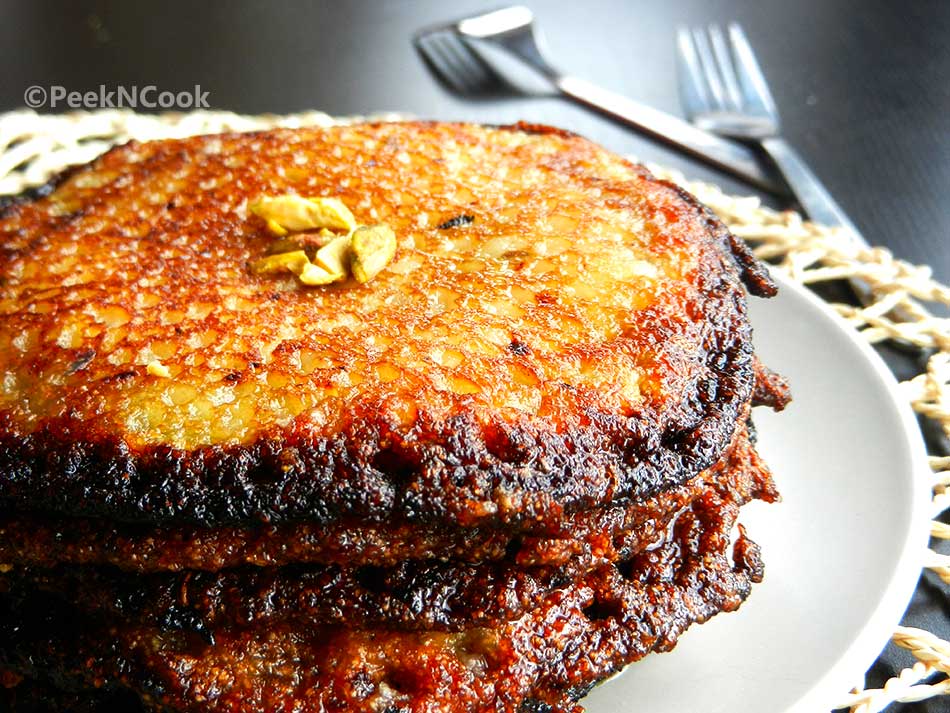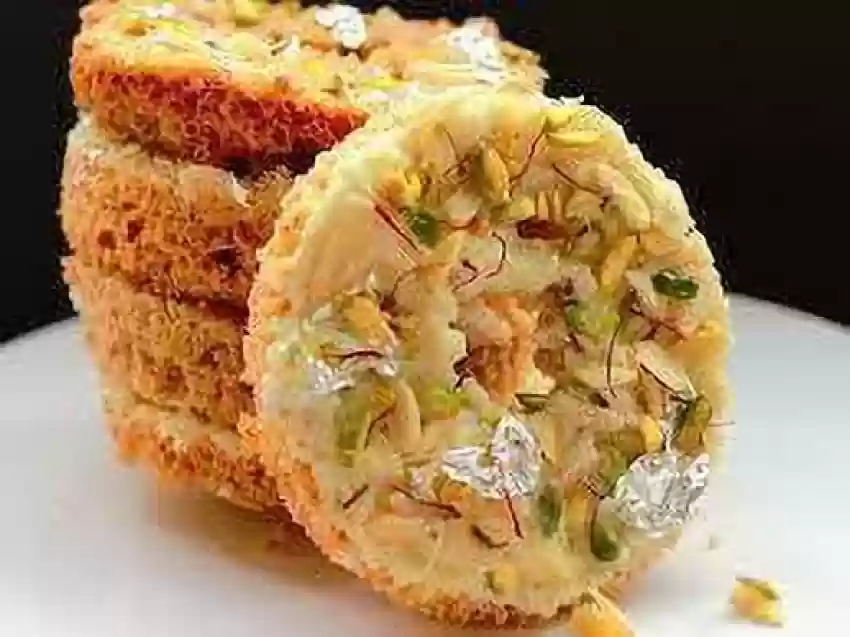Malpua: Another Indian Sweet That Never Gets Old
Malpua is a classic and beloved dessert in Indian cuisine, and it is often made during the festival seasons, family events, and celebrations. A traditional Indian dessert, this version has its origins rooted with deep Indian dishes, which will be found in several portions of the country and each putting a certain spin on it. Malpua are loved for its juicy sugar syrup and crispy texture.
In this blog, we are going to discuss what Malpua is, what is the cultural significance of Malpua, how it is made and why it is still a staple in Indian kitchens.

What is Malpua?
A deep-fried sweet pancake consisting predominantly of flour, sugar and milk. Malpua is unique because the outer edges are crispy, but they have a soft, spongy center. The fried Malpua is often soaked in sugar syrup, also aromatic with spices such as cardamom or saffron. Sugar syrup adds more sweetness and also gives Malpua its signature shine.
Malpua are traditionally made during festivals, wedding and other major celebrations in India. Its complex flavor and mouthfeel make it an appropriate celebration food. The dish is traditionally prepared during festivals like Holi, Diwali, Makar Sankranti, and Raja Parba celebrated in Odisha.
The Origins of Malpua
Although the exact origin of Malpua is not known, it is thought to have been a part of Indian cuisine for centuries. The dish is believed to have origins in ancient India and has been mentioned in historical texts and regional cookbooks. Malqpuas are derived from the Sanskrit word “Mal” (sweet) and “Pua” (fried) so the word translates to “sweet fried.”
Various parts of India have adapted the recipe to their liking, resulting in variations that showcase local produce and spices. The versatility and popularity of the dish have made it a national favorite and an integral part of the rich dessert culture of India.
Cultural And Traditional Relevance Of Malpua
The importance of Malpua is more than just a sweet dish; it is an integral part of Indian festivals and traditions. It has a prominent role reserved for many celebrations as when it is made and eaten, they both represent happiness, wealth, and togetherness.
UP & Bihar Malpua is one of the most important delights of Holi, the festival of colors and luster, celebrated primarily in the northern parts of India. This is the time when people are celebrating the festivities together, and the sweetness of Malpua just adds more to the celebratory mood. The colors are not only vibrant but their sweetness is also in celebration of spring and the triumph of good over evil.
During Raja Parba, a festival centered around the worship of the earth’s fertility and womanhood, the Malpua is prepared in Odisha. This is all part of a special offering to the goddess as the month long seclusion of women in rural areas comes to an end. As spiritual as it is gastronomical, Malpua serves not only as a dessert during this festival but also as an offering to pay respect to nature’s abundance.
In the West Bengal region, Malpua is commonly served with Rabri—a dish made with cream, evaporated milk, sugar, and cardamom, which makes a rich and decadent dessert combo. In parts of India (like Rajasthan) it is even served with khoya, making the dish richer still.
How to Get Started
Malpua might not need many things, but preparation and technique is all that makes it yummy. Here’s a look at the essential ingredients:
Flour: As main ingredient, all-purpose flour (maida) is used in combination to prepare the batter. Some recipes for the dish also include a mix of rice flour or semolina (sooji) to give it texture and and crispness.
Bananas: Old smashed Bananas are regularly incorporated into the batter, giving natural sweetness and also playing a key role in the addition of delicate and spongy texture to the Malpua.
Milk: Like most batters, milk is used to help bring the ingredients together to form a smooth batter.
Sugar: Sugar is added in the batter, and also used to prepare the sugar syrup.
Cardamom: Malpua gets a lovely aroma and taste from ground cardamom.
Ghee (Clarified Butter): The traditional fat for frying, ghee gives the Malpua a rich flavor and crisp texture.
Saffron (optional) — Some recipes for Malpua call for saffron to enhance the flavor and color of the dessert.
Sugar Syrup: The sugar syrup is usually flavored with cardamom or rose water and grilled into the Malpua after frying.
How To Prepare Malpua In Steps
Malpua, needs some patience and attention to detail, but it’s all worth it. Click here for the way to make this lovely dessert:
Prepare the Batter:
Add flour, mashed banana, milk, sugar and cardamom powder in a mixing bowl. Stir everything together into a smooth batter. It should be a little thicker than a pancake batter, but still pourable.
— Allow batter to rest for 15 minutes, which helps all the components meld together and thicken further.
Make the Sugar Syrup:
Mix equal parts sugar and water in another pan. Continue to simmer, stirring occasionally, until the sugar has dissolved.
– Add cardamom or saffron to the syrup once it is dissolved for additional flavor.
Reduce the syrup a little longer, until it becomes one-string. Remove from the heat and place aside to keep warm.
Fry the Malpua:
Add ghee to a frying pan and heat over a medium low flame. When hot, add a ladleful of batter and spread it in a circular shape.
Cook till the Malpua is yellow and crisp from both sides. This will take a few minutes so do this patiently and turn it over carefully.
Soak the Fried Malpua in warm sugar syrup immediately after fried. Allow it to soak for a few seconds to soak up the sweetness.
Serve:
Garnish with crushed pistachios, almonds or rose petals for decoration.
Serve the Malpua hot, alone or with Rabri or khoya, or any other side pairing.
Variations of Malpua
While the basic recipe for Malpua remains constant, the dish has several regional varieties that use diverse ingredients and methods of making it:
Bengali Malpua: In West Bengal, they often add grated coconut in the batter while making Malpua giving it a chewy texture. Usually served along with sweet condensed milk dish called **Rabri.
Malpua Chura (Khoya): In some varieties of Malpua, khoya (reduced milk solids) is added to the batter, which makes the Malpua thicker and richer. This is a regional variation found in some parts of Rajasthan.
– Vegan Malpua: Malpua made without inclusion of dairy for the vegan folks. You can replace milk with coconut milk or almond milk, and you can use vegetable oil in place of ghee. The end result is a lighter but no less delicious Malpua.
Banana Malpua: A version which incorporates more overripe bananas in the batter resulting in a Malpua that is even tastier and moister.

Health Considerations
Malpua may be a delight for the taste buds but it is quite rich and high in calories owing to the frying and the sugar syrup. If you want to relish Malpua but do not want to overindulge in it, the recipe can also be altered. Using less sugar, choosing baked Malpua over fried Malpua and adding whole wheat flour can help make the dish slightly healthier. But, as with all desserts, Malpua should be enjoyed in moderation.
See my other blogs of Lobster with crispy toppings
Conclusion
Malpua is not only a dessert; it has part of the Indian heritage. Its combination of crispiness, and softness, sweetness, and spice makes it a globally adored treat. Whether as a grand festival dish or a simple home-cooked delight, Malpua is a celebration of life, taste, and tradition.
That dish is still alive and well, taking on new forms but respecting the original roots. Surely, with its rich history, simple preparation, and remarkable taste, Malpua will stay a beloved favorite for decades more to come!

